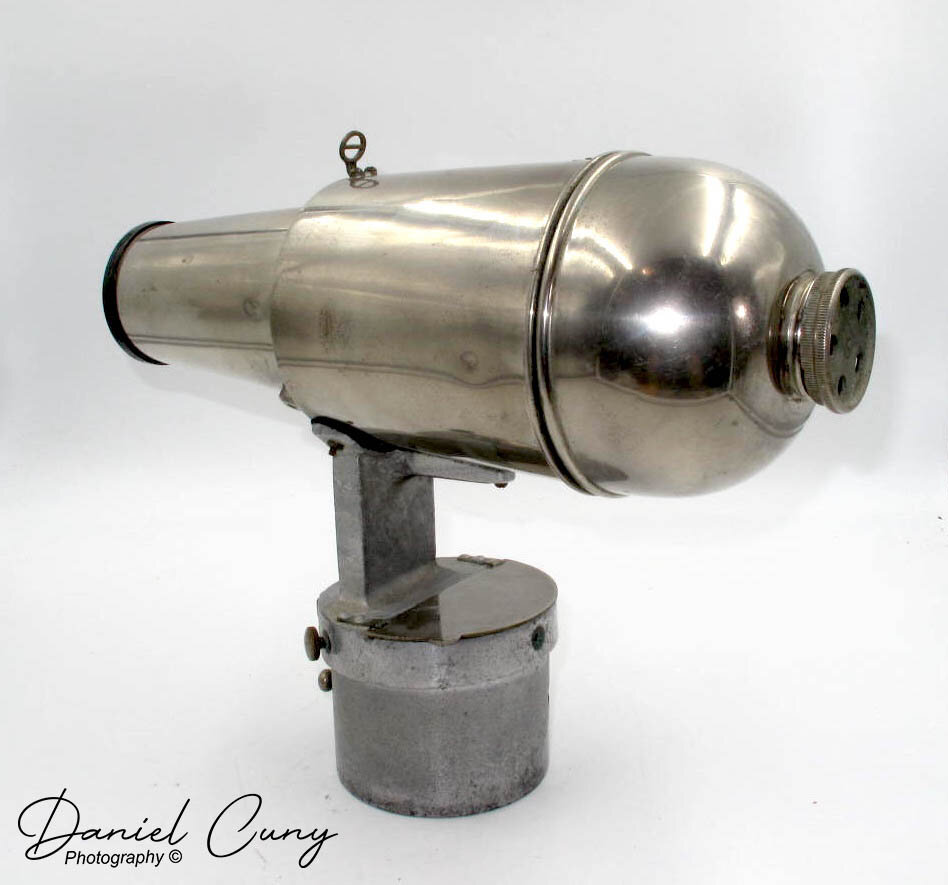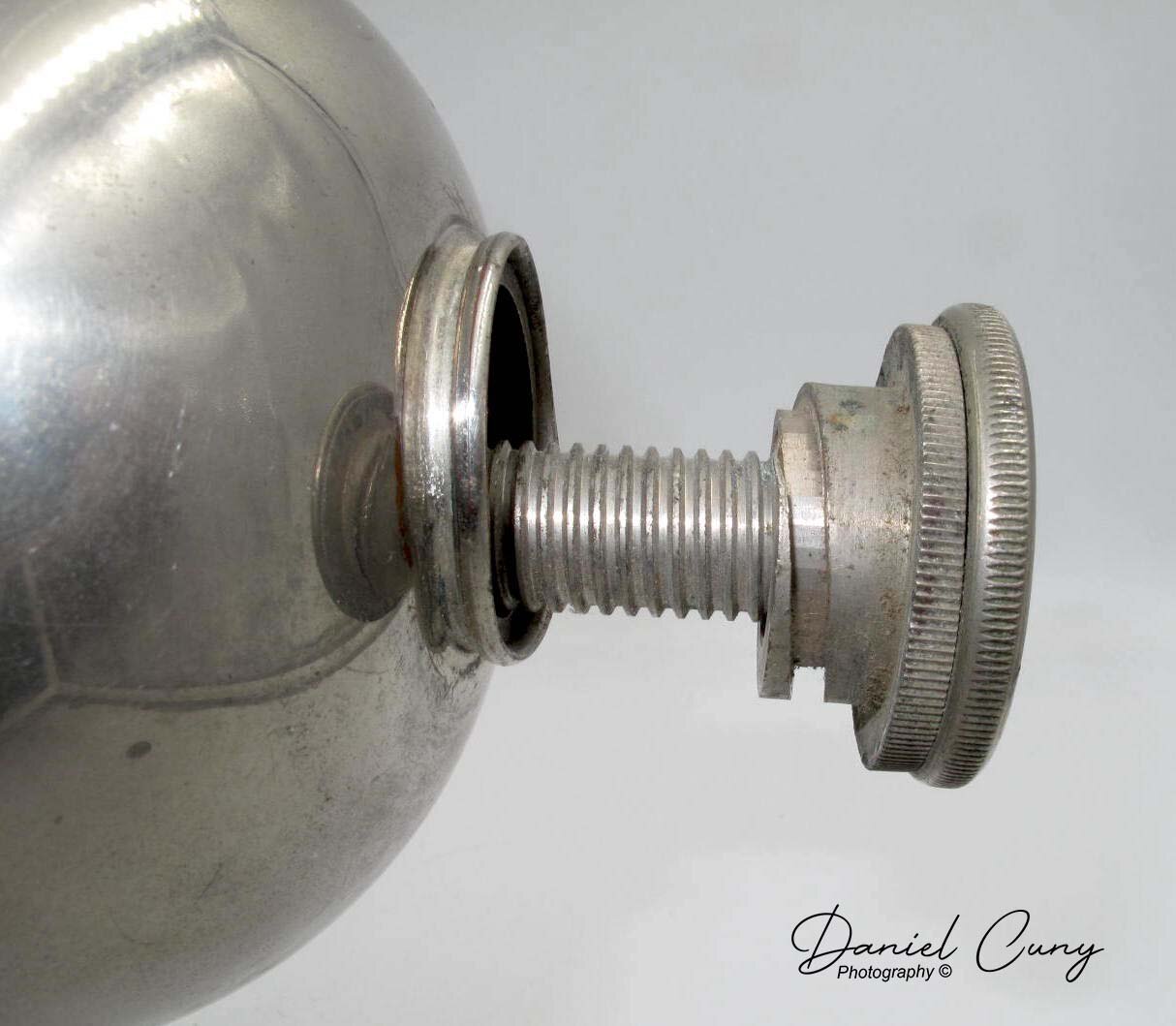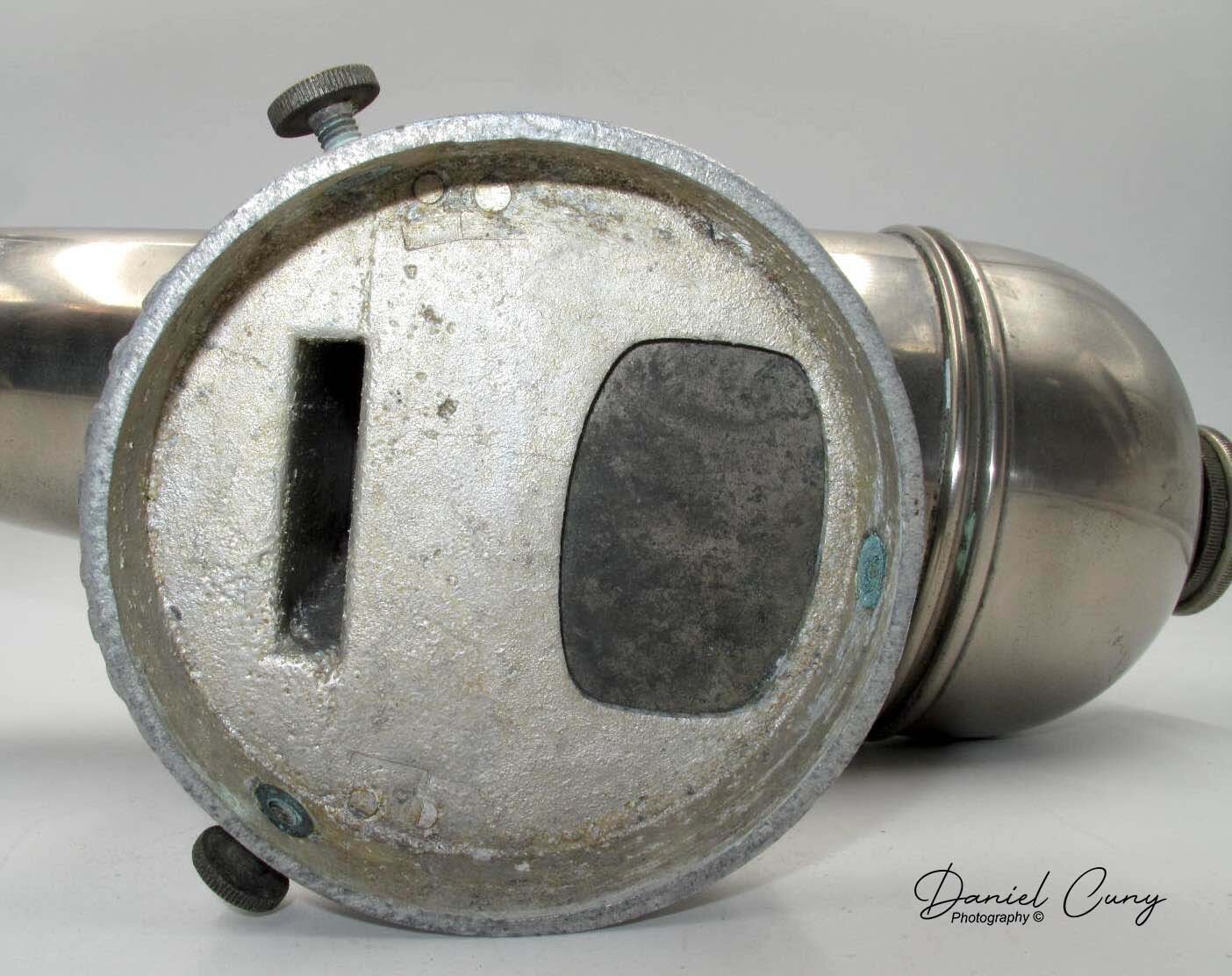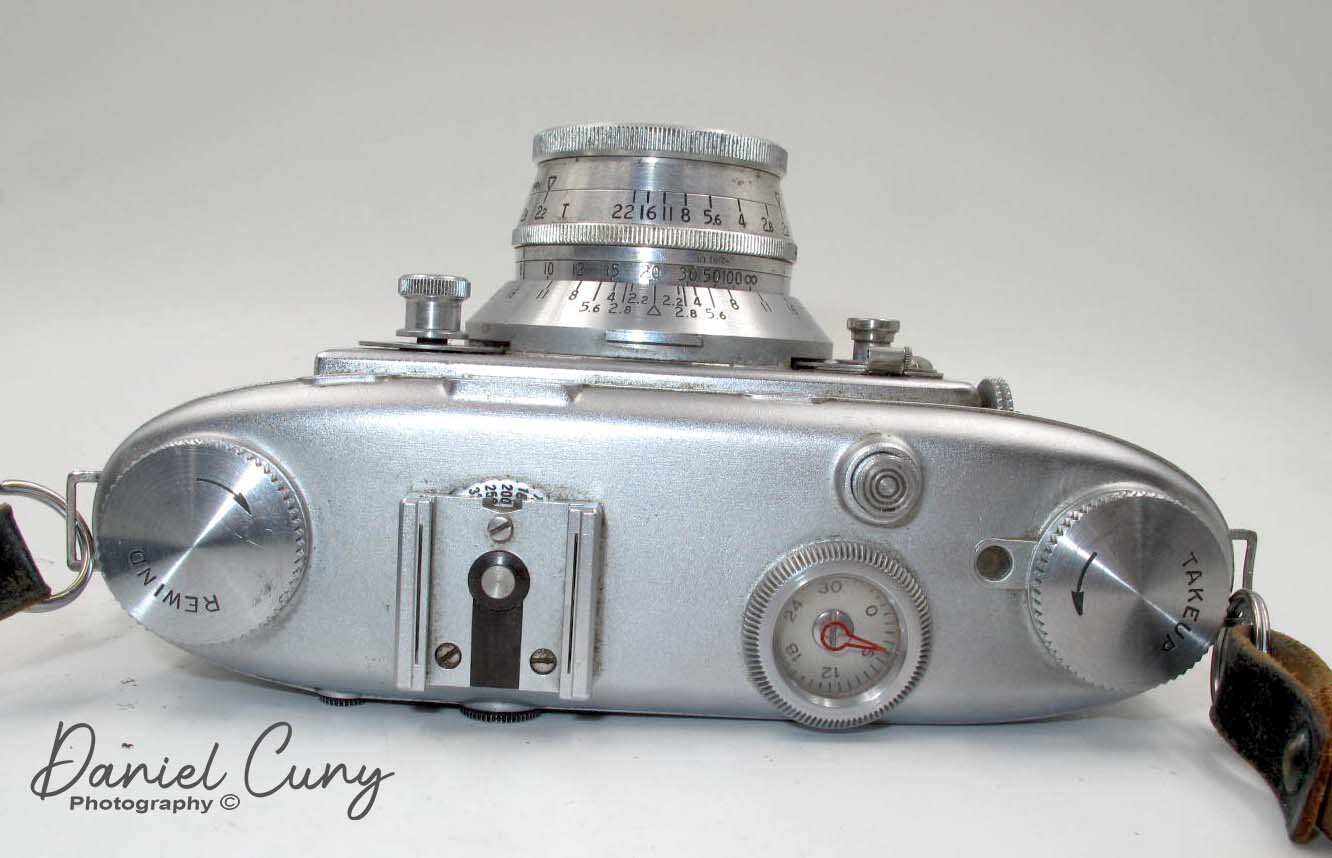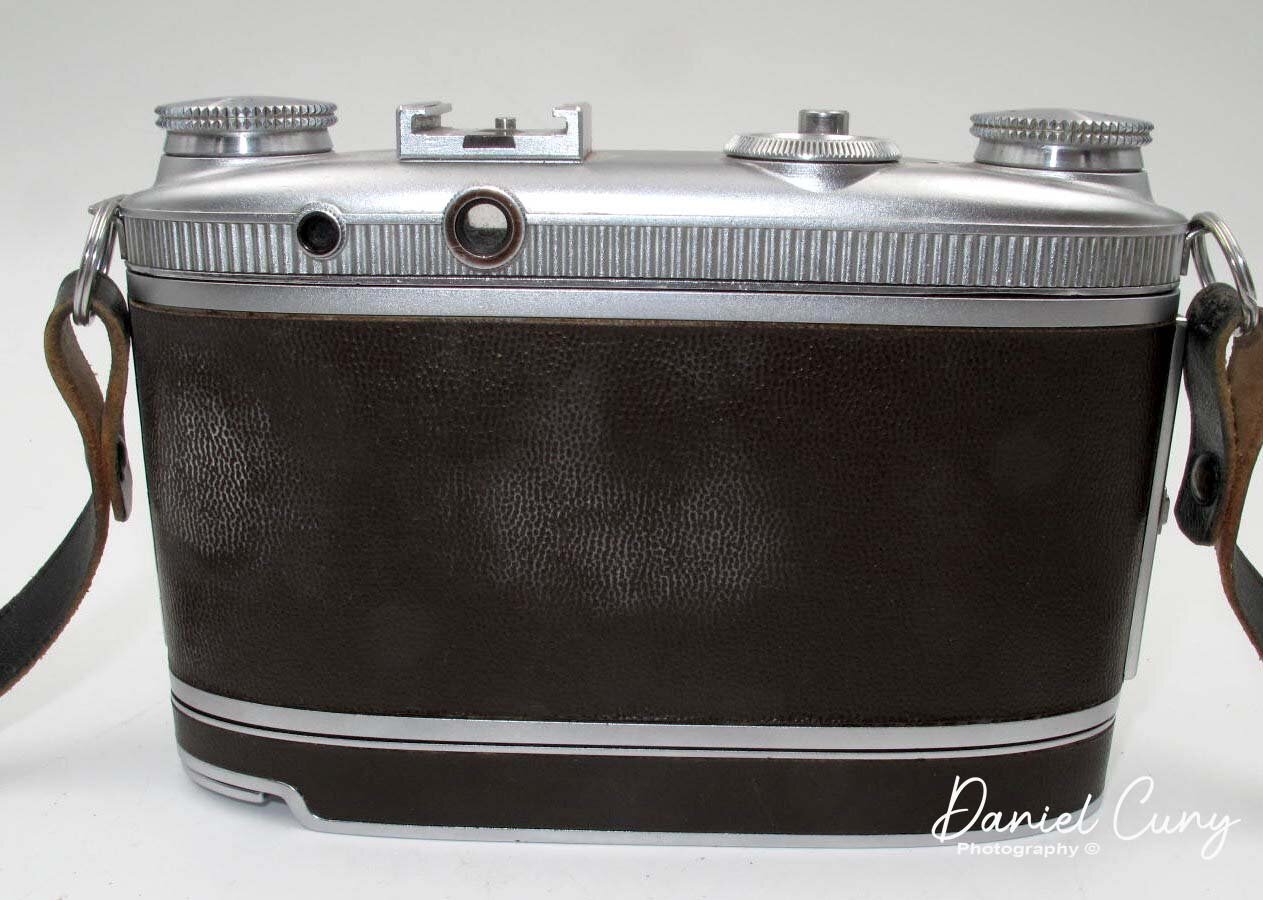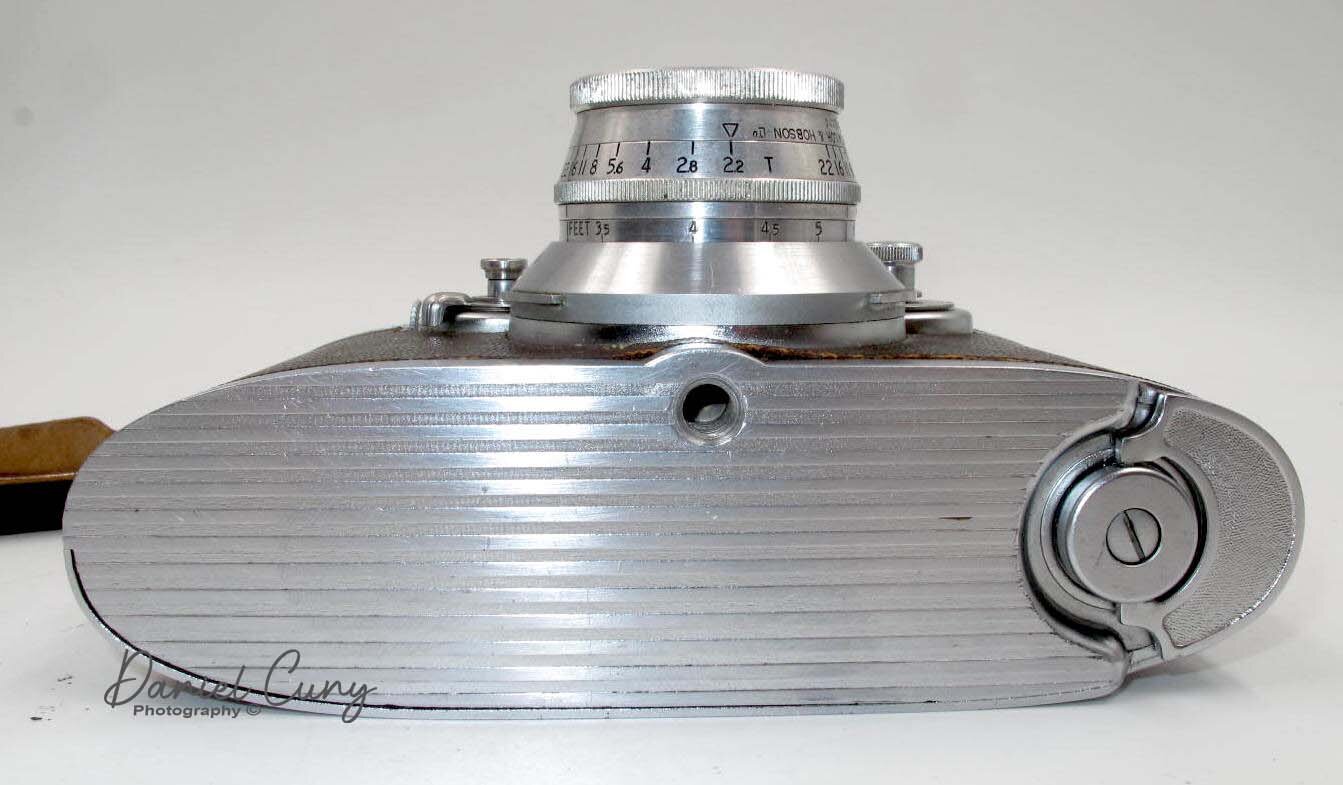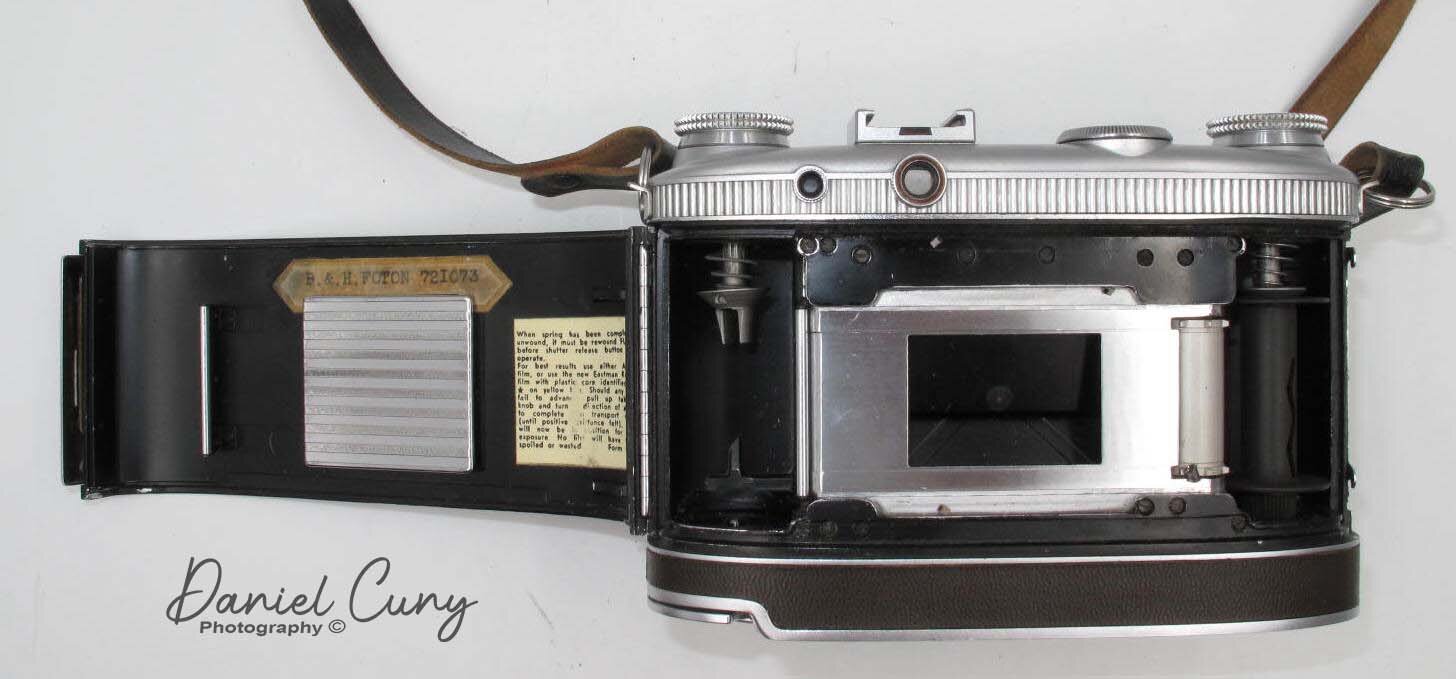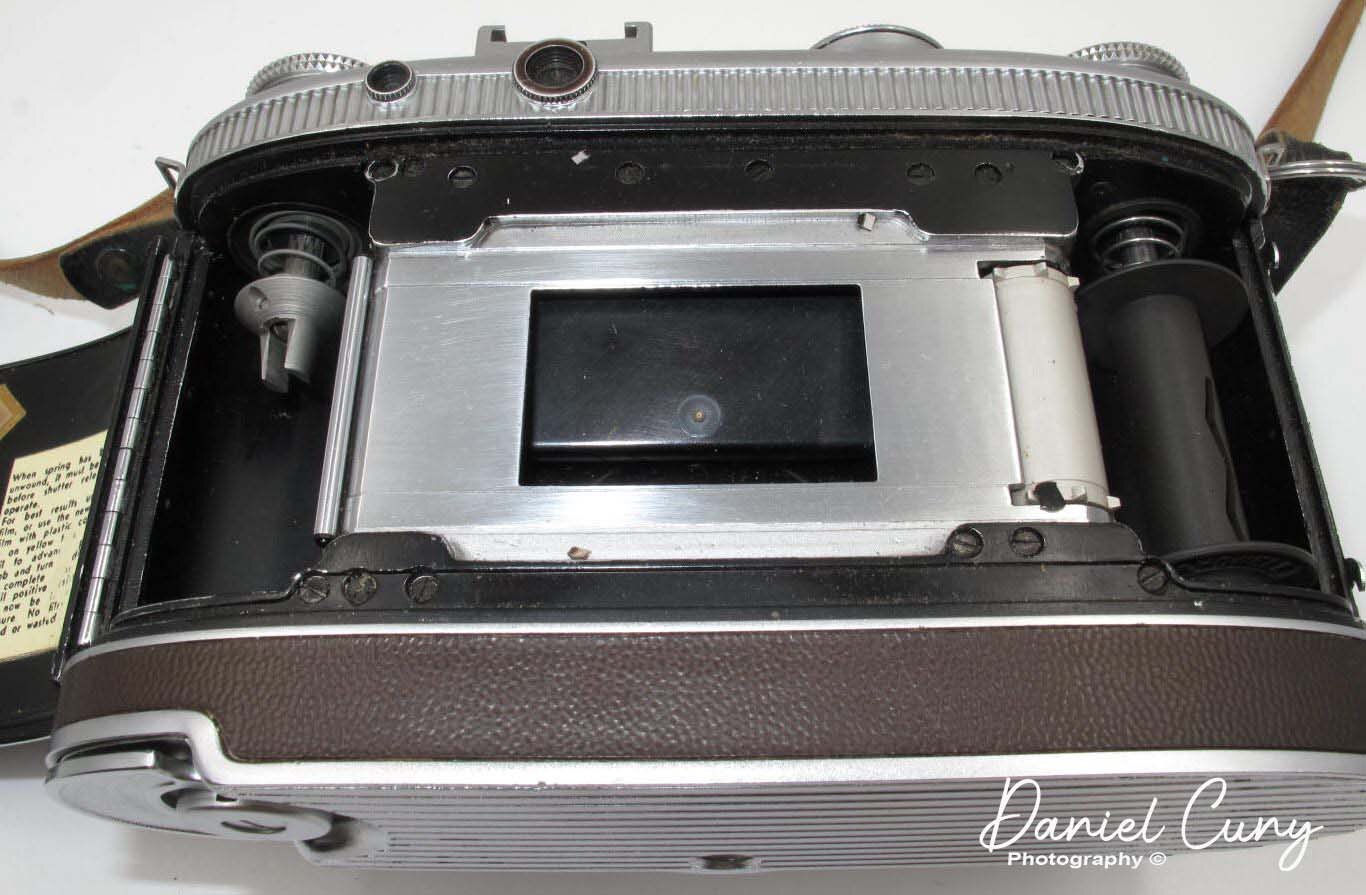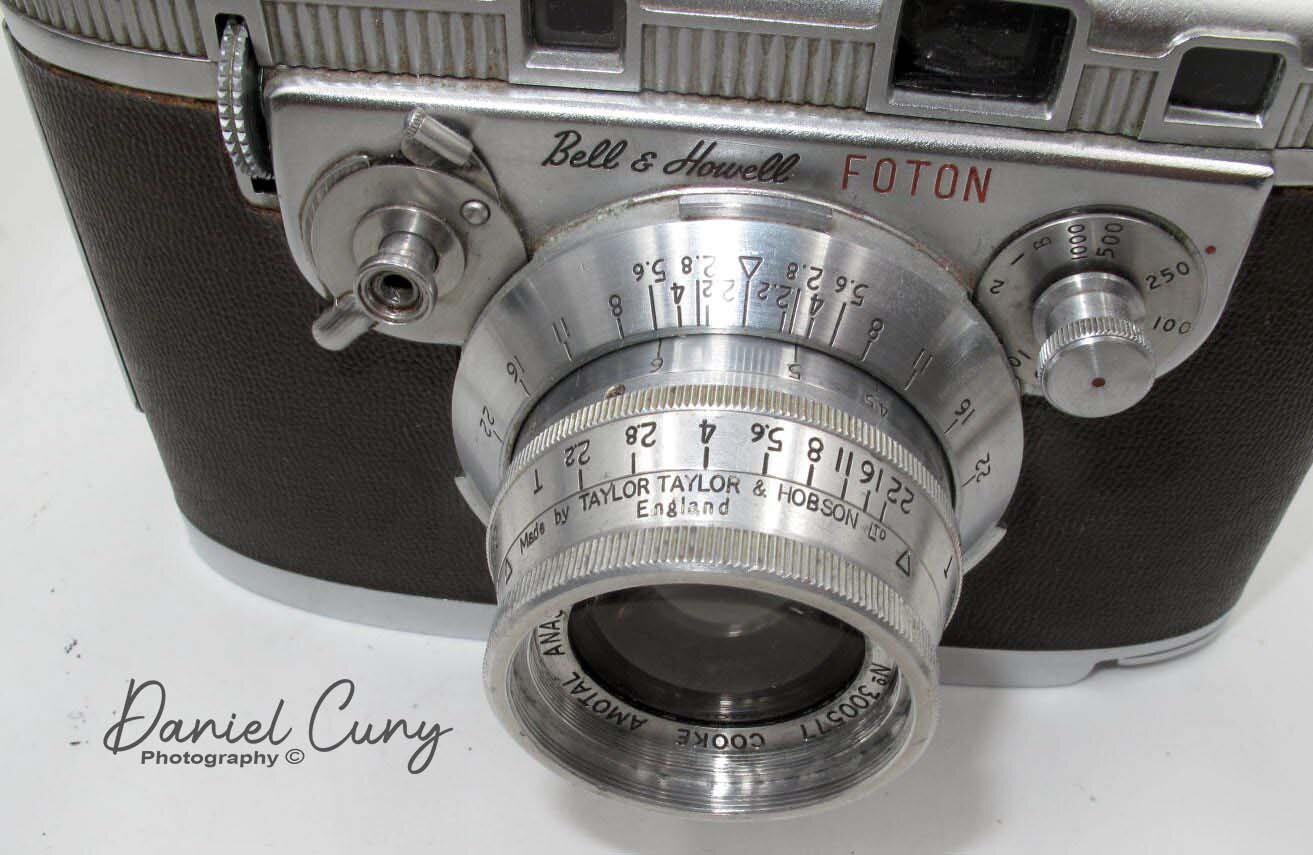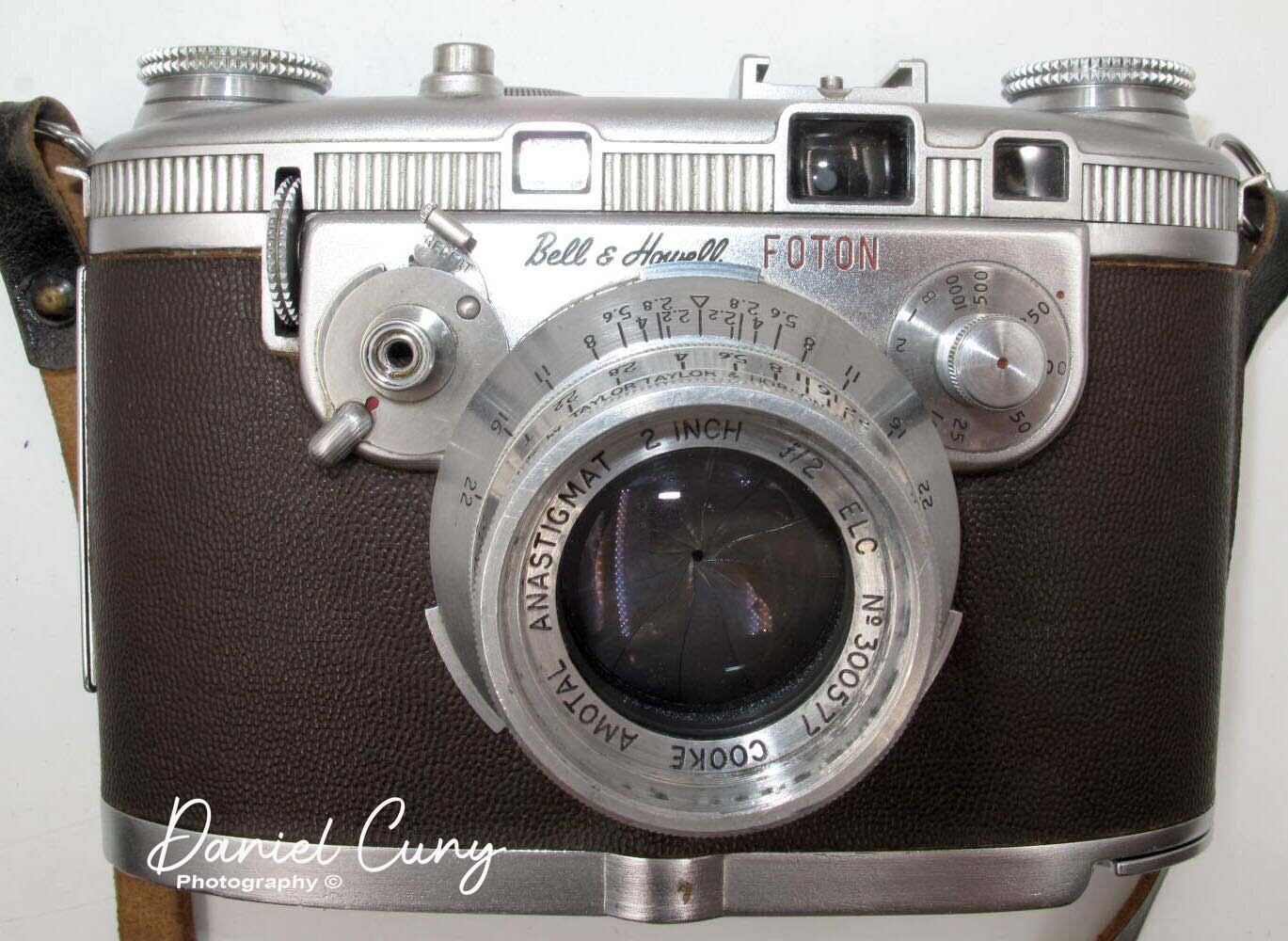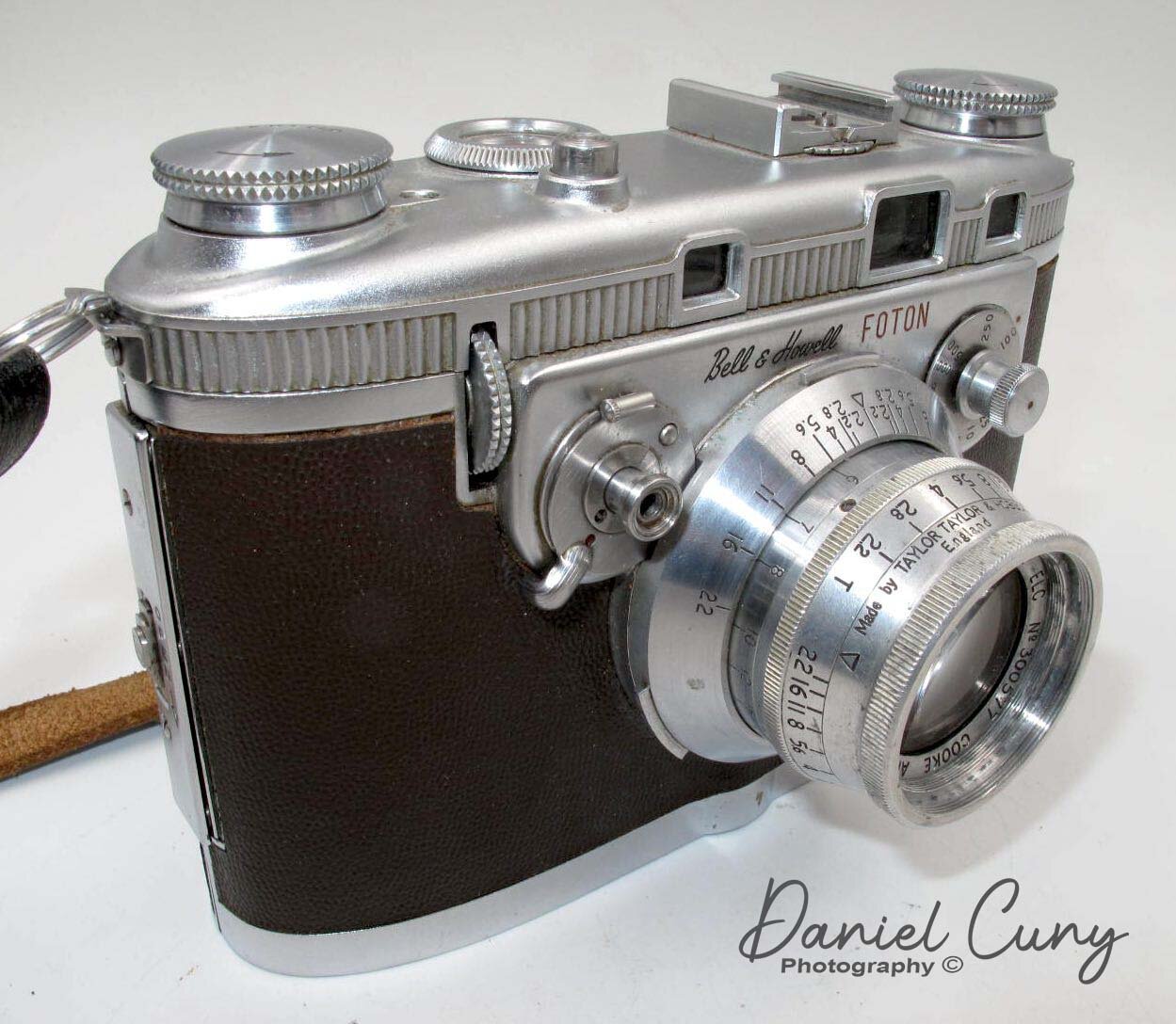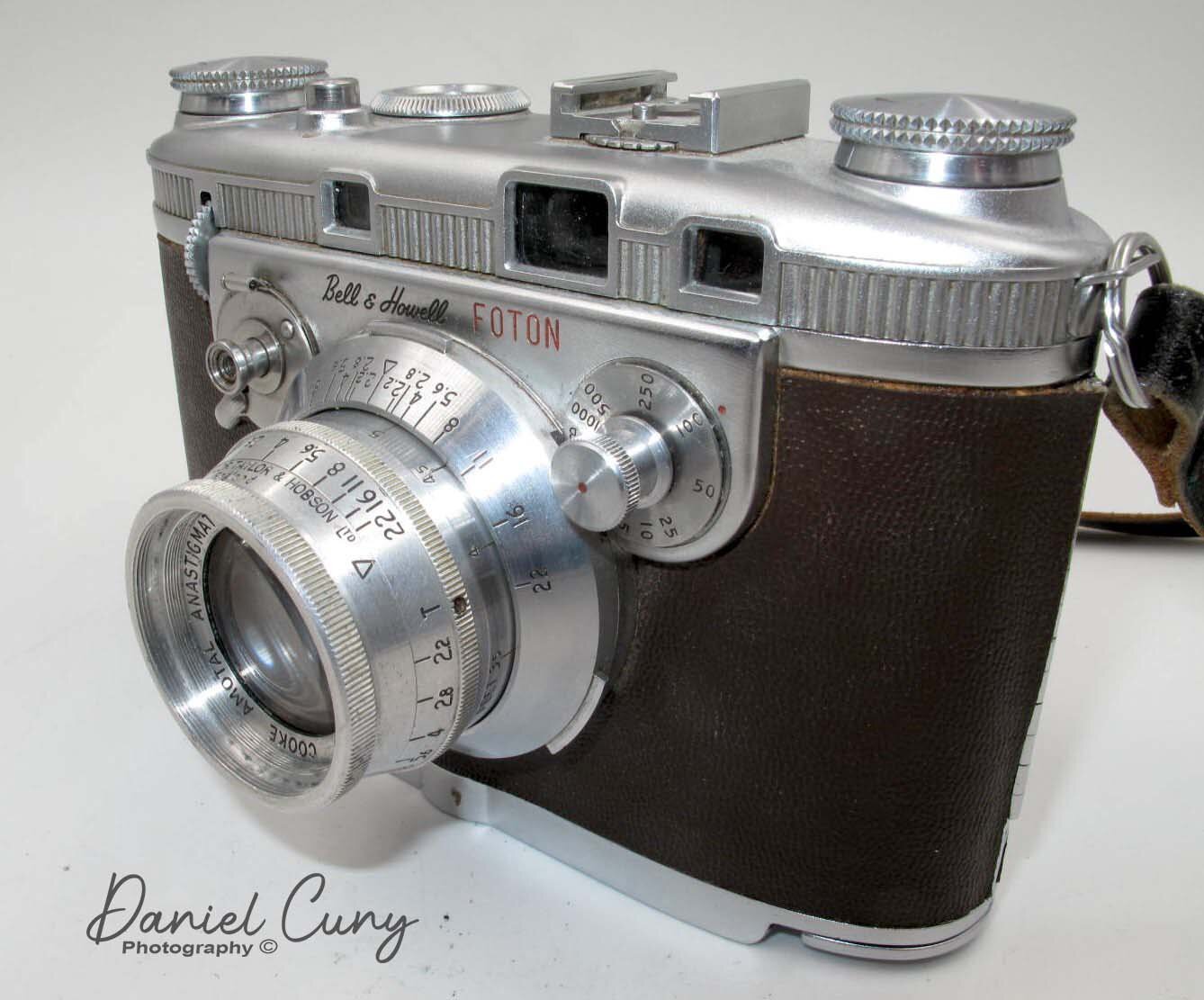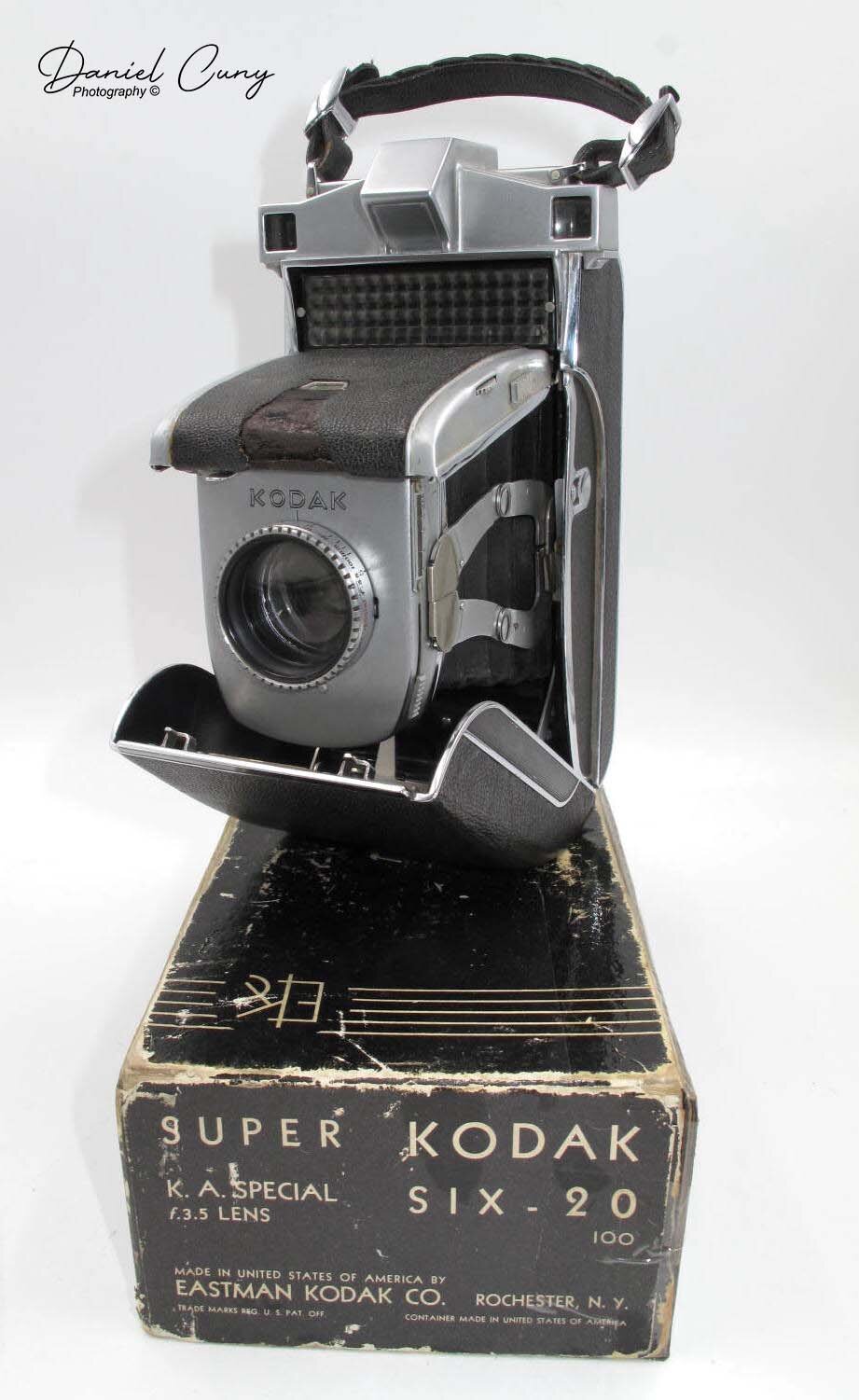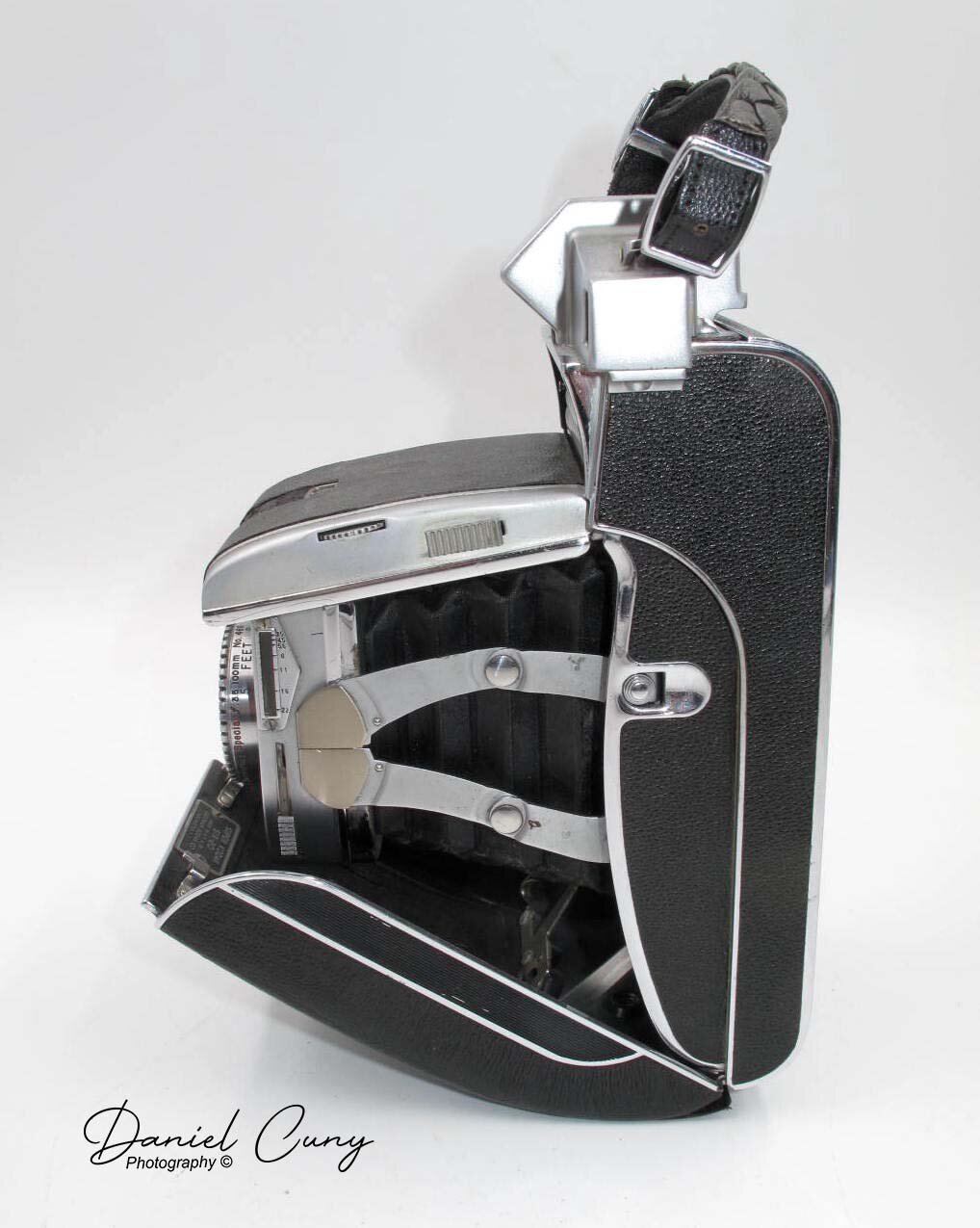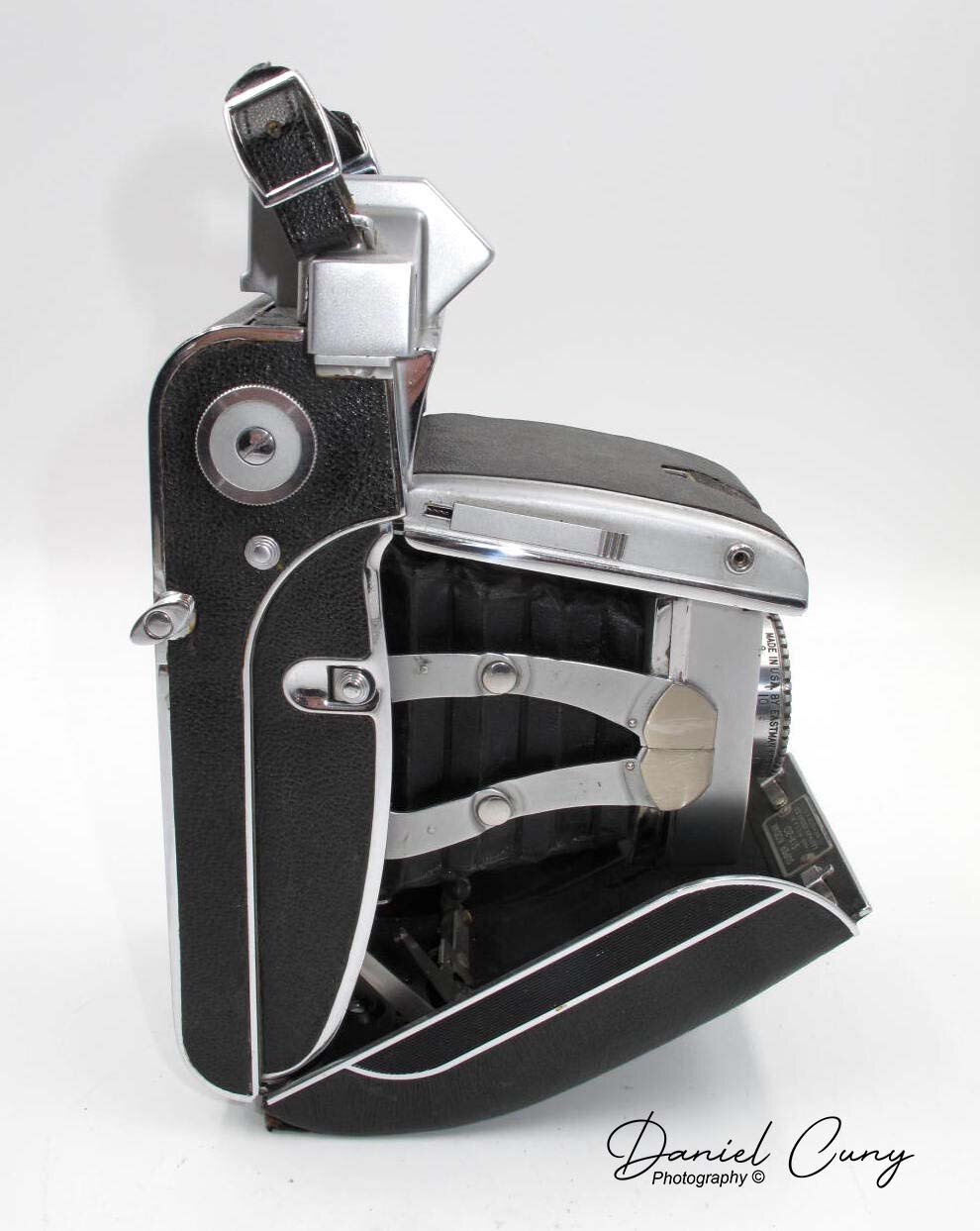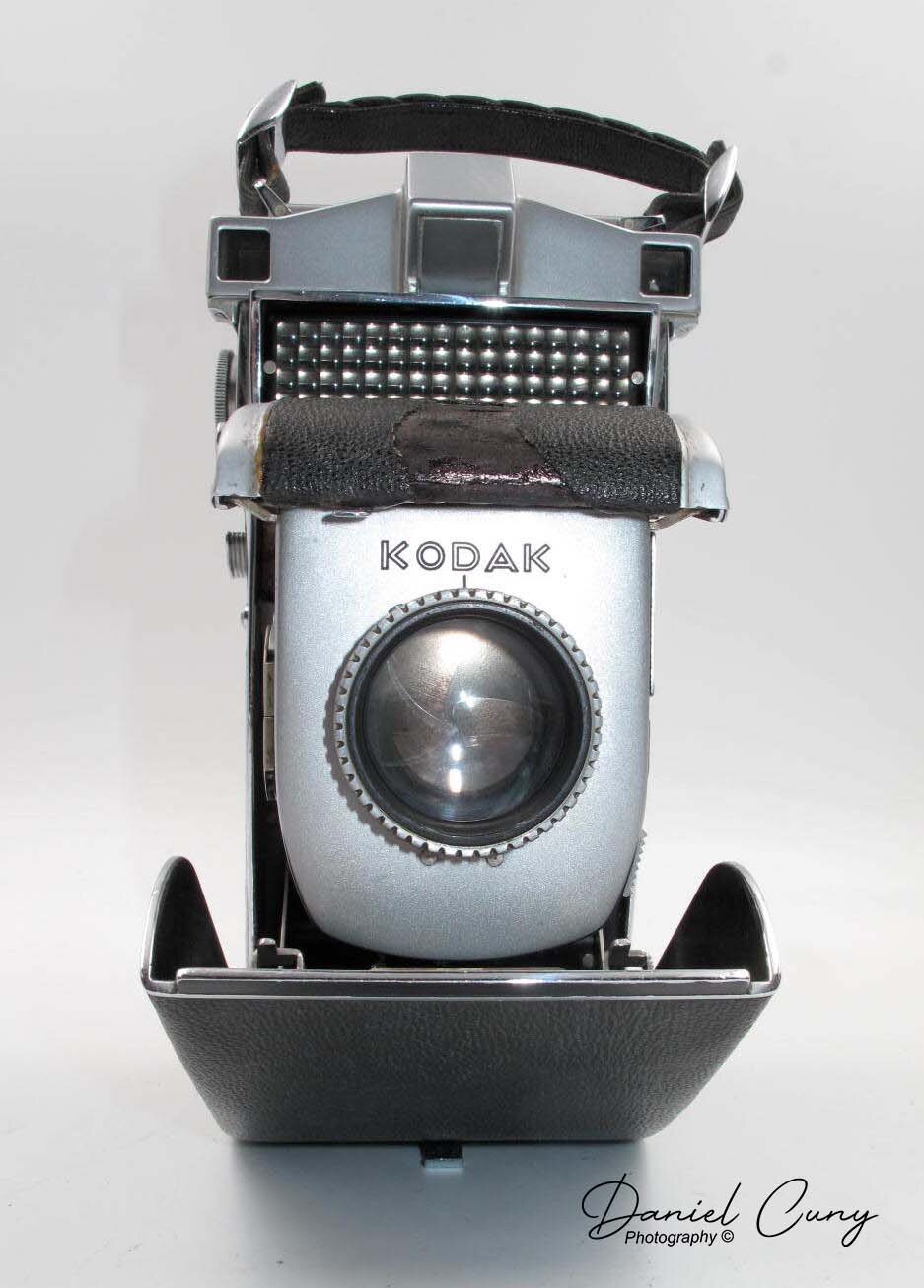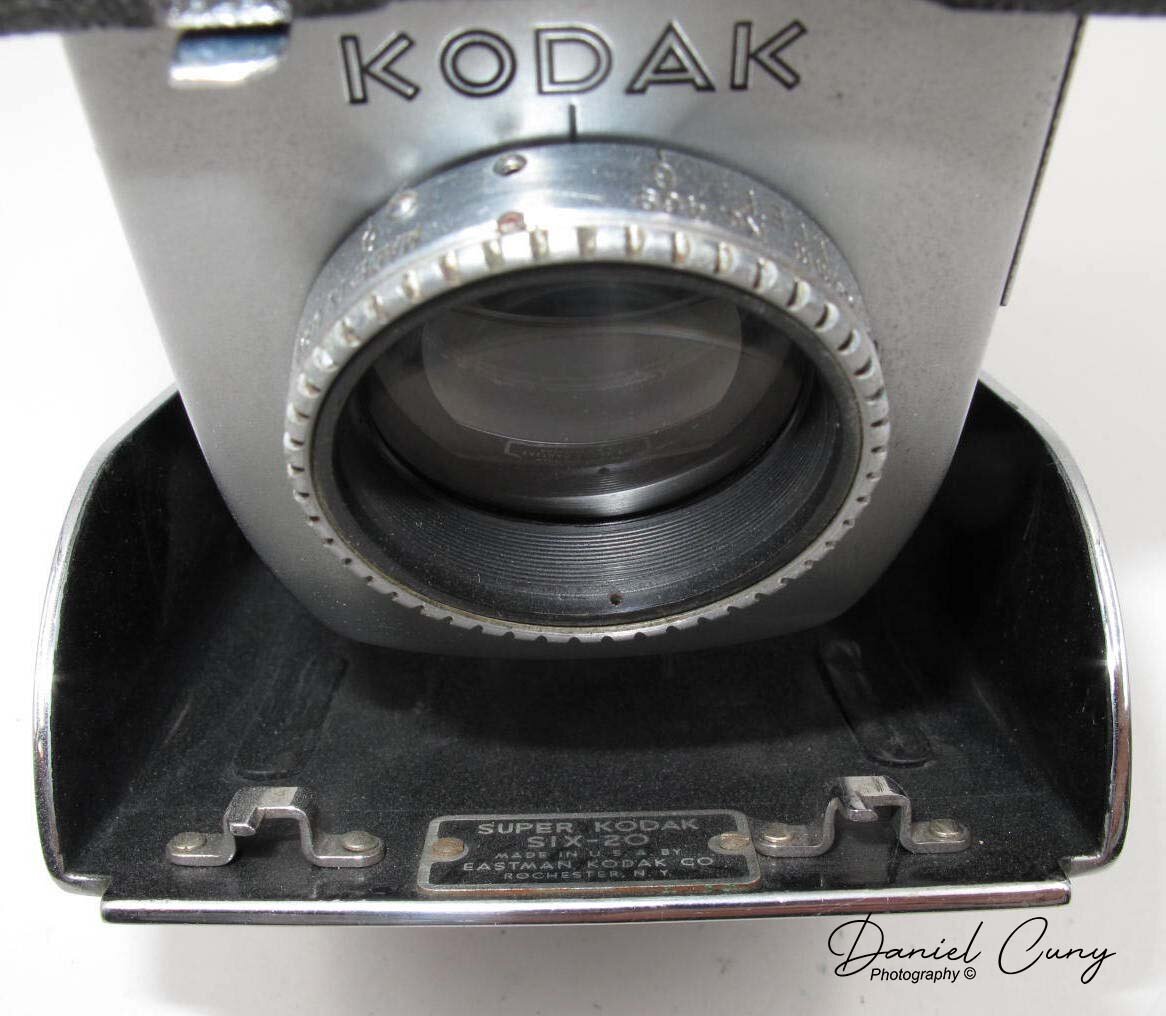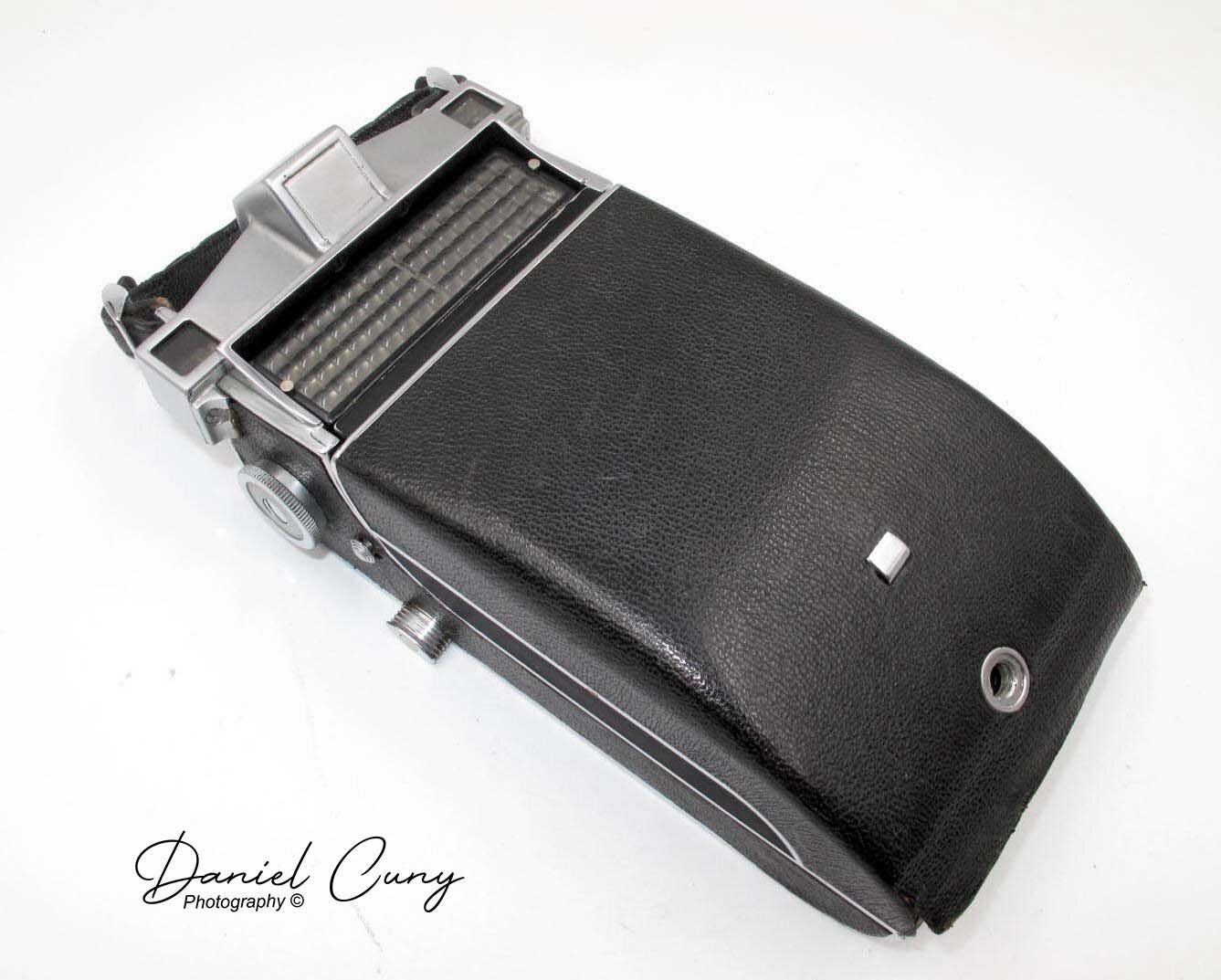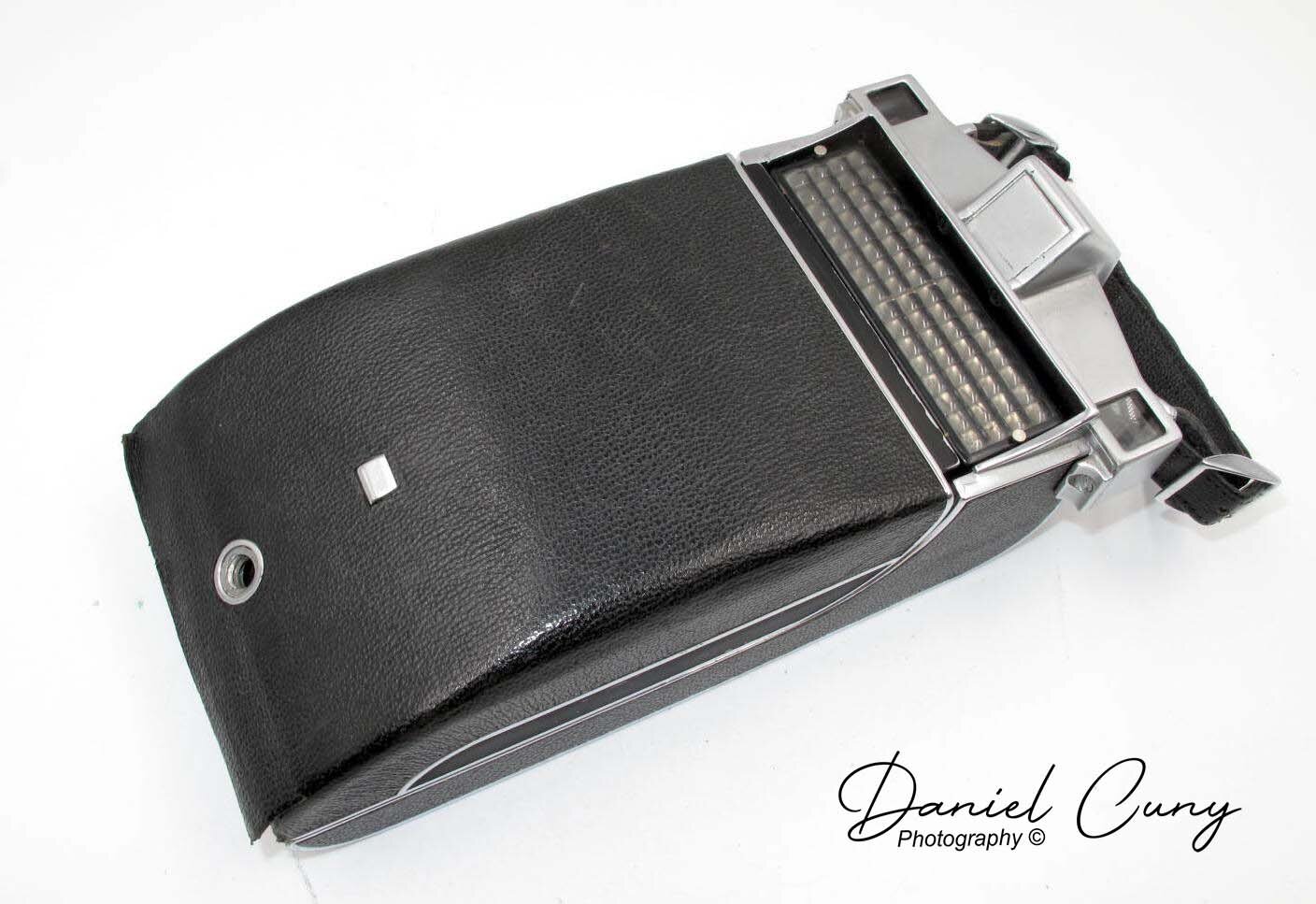This is of the more unusual cameras in my camera collection. At least it’s the most unusual in shape, and size as this is one beautiful chrome and nickel cameras in the collection.
This odd camera was produced by The Chicago Ferrotype Company which was started by two brothers, Louis and Manuel Mandel in 1904. They produced the Wonder Photo Cannon between 1910, and 1928 as well as other “street” style cameras. The “street” camera was made so the photographer to produce a large number of images in a short time. It’s said the photographer could produce up to 360 images in an hour.
Emblem on the front of camera
The name of the camera comes from the shape of a ship’s cannon and was also known as a magazine camera due to its ability to hold many ferrotype plates into the back of the camera at one time. This conical-shaped camera measures about 9 1/2″ tall from the base to the top of the viewing site and is about 13 1/2″ long.
One of the reasons I like this camera is it resembles the original Voigtlander daguerreotype camera. You can see a replica image of the camera here.
The photographer would load the 1” diameter ferrotype plates into the rear of the camera through the backs opening. They were held into place by a spring-tensioned rod that threaded into the back.
The photographer would photograph the subjects, and the ferrotype plate would then drop into the film processing chambers under the camera. There is a rotating arm that allowed the photographer to drop them into 2 different chambers.
On the right of the camera is a rod, and on my version, it appears this sets the shutter to either “T” or “B” for exposure. On the lower left side of the lens is where the photographer could put in the bulb release to expose the images.
The Wonder Photo Cannon in my collection
I purchased this from a person in the Seattle area that said this was his father’s camera and he had had it for many, many years, and used in when the father was younger and had it put away for years. Here are some images of the camera in my collection. It’s missing the rear finder, but overall a great addition to the collection.
If you have comments, concerns, or questions, I look forward to hearing from you. If you have items you’re looking to move, please email me on my contact page, as I’m always looking. Thank you for your time.


